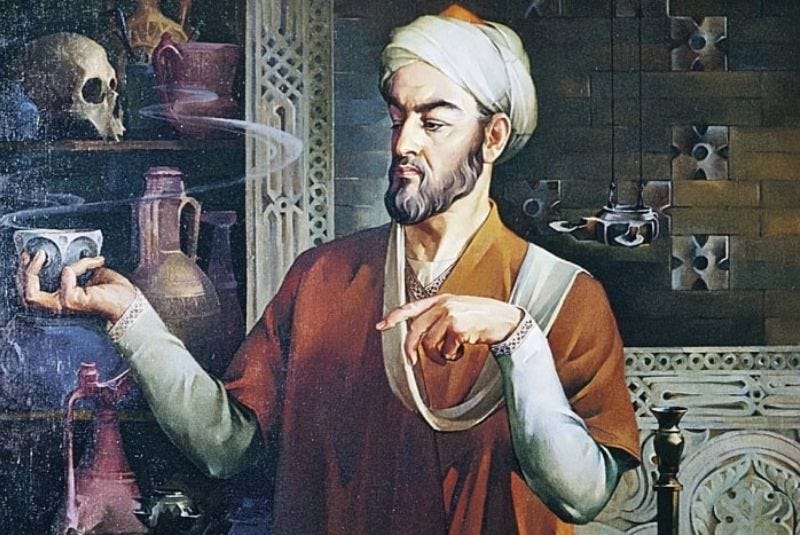The Law of Natural Healing | 3 - The Humors
Avicenna's Canon of Medicine, Volume 1 - General Medicine
I reject the notion that our ancestors made us what we are today whilst simultaneously steeped in ignorance. After spending a decade in the modern medical paradigm, I believe that there is far more to the traditional medical arts than meets the eye. Many of the foundational concepts of these lost arts seem “pseudoscientific” to the undiscerning mind.
Traditional medicine is not for the uninitiated.
For those unfamiliar with this series, I have been trying to get a grasp on the traditional medical arts. At the same time, I have been looking for scientific discoveries and observations which can account for these thoughts on the nature of life and disease.
The Canon is a compendium written by the late great Persian polymath ibn Sina - also known as Avicenna.
As you may expect, the first part of this compendium concerns itself with basic principles and the natural sciences upon which this medical art is built.
Volume 1 Overview (The Scope of Medicine and Its Physical Basis):
The Scope of Medicine
The Elements
The Temperaments
The Humors
Anatomy
General Physiology
The Breath: Its origin, forms, sources and relation to being
Psychology
In this article we discuss the content of Lecture 4 concerning the humors.
As with the content of Part 2 (lectures 1-3), discussion of humors borrows from the enduring human concept of the elements and temperaments which have served humans for millenia.
Thus, it is just as tempting to dismiss humoral theory as it is to dismiss the idea that the world consists of 4 principle elements. So, if you need a little help getting past this intellectual stumbling-block, if only to appreciate the concept of humors, I would highly recommend reading Part 2 before proceeding.
The Humors
The humors are the primary fluids of the body. These fluids flow through the inner spaces and are affected by the needs, conditions, and functions of the body.
In Avicenna’s words
Humor (akhlat) or body-fluid is that fluid, moist, physical substance into which our aliment [what we consume] is transformed.
It is what replaces the loss which the body substance undergoes.
To thoroughly appreciate the concept of flowing humoral substances, it is useful to illustrate one of the principle modes by which the body exists and functions.
We can glean this principle mode by reading O. Cameron Gruner’s remarks on Avicenna’s work [words in brackets are my words]:
The vegetative processes associated with digestion and absorption of food may be first briefly referred to.
…we consider how the ultimate components of the food travel (N-compuonds, glucose, fat, phosphorus, sulphur, iron, and the like) during rest, exercise, sleep, etc…according to the character of the diet as a whole, the fluids taken, and the state of the bowels…
We picture also the innumerable chemical interchanges and physical transformations in various parts of the cycle;
In brief, then our picture of the body is that of a complex of tubes and channels - potential as well as actual - which vary in size from the obvious alimentary-canal [digestive tract], air-passages, and great blood vessels, down to the finest ramifications of the latter, the cavernous tissues [venous sinuses] - both macroscopic and microscopic - the serous cavities [peritoneum & pleural potential spaces], and the intracellular channels.
All these form one continuous labyrinthine system, through which we may trace the ingested food materials, the metabolic, secretory and excretory products.
As long as these channels are patent throughout, and as long as these various substances can flow freely through them, and the vital energy has a free play outward, so long is the body in a state of health.
With this in mind, we begin to consider all of the different states of illness or diseases in which flow is disrupted beyond that which is required for optimal function.
Whether your sinuses, gallbladder, veins, arteries, nerves, lungs, gut, etc…etc.
The alterations to the optimal flow of body fluid (humors) or the breath, lead to both symptomatic and histologic changes which we can use to diagnose and treat illness.
Without further delay, lets get into Avicenna’s words on the Humors.
Avicenna’s Humors
While we review this chapter on humors, it is worth keeping in the back of your mind that humoral theory is as old as Hippocrates and Galen - both of whom had tremendous influence on Avicenna.
Humors are the fluids which are formed from that which we consume through our digestive tract. The parts of this consumption which on their own, or by mixture with other substances, can be assimilated by the members and organs of the body.
The humor which can be completely integrated into the tissues, is the healthy or good humor.
In the case of incomplete integration, the residue from this process is the unhealthy or abnormal humor. This residual “superfluity”, in the absence of proper digestion or conversion, is unsuitable for assimilation and is therefore eliminated.
The four humors (blood, phlegm, yellow and black bile) are the primary fluids. The secondary fluids include both the fluids destined for excretion (waste) and non-excrement (fluid which has not yet been acted on by the organs for which they are destined).
Keep reading with a 7-day free trial
Subscribe to Foundational Health to keep reading this post and get 7 days of free access to the full post archives.




